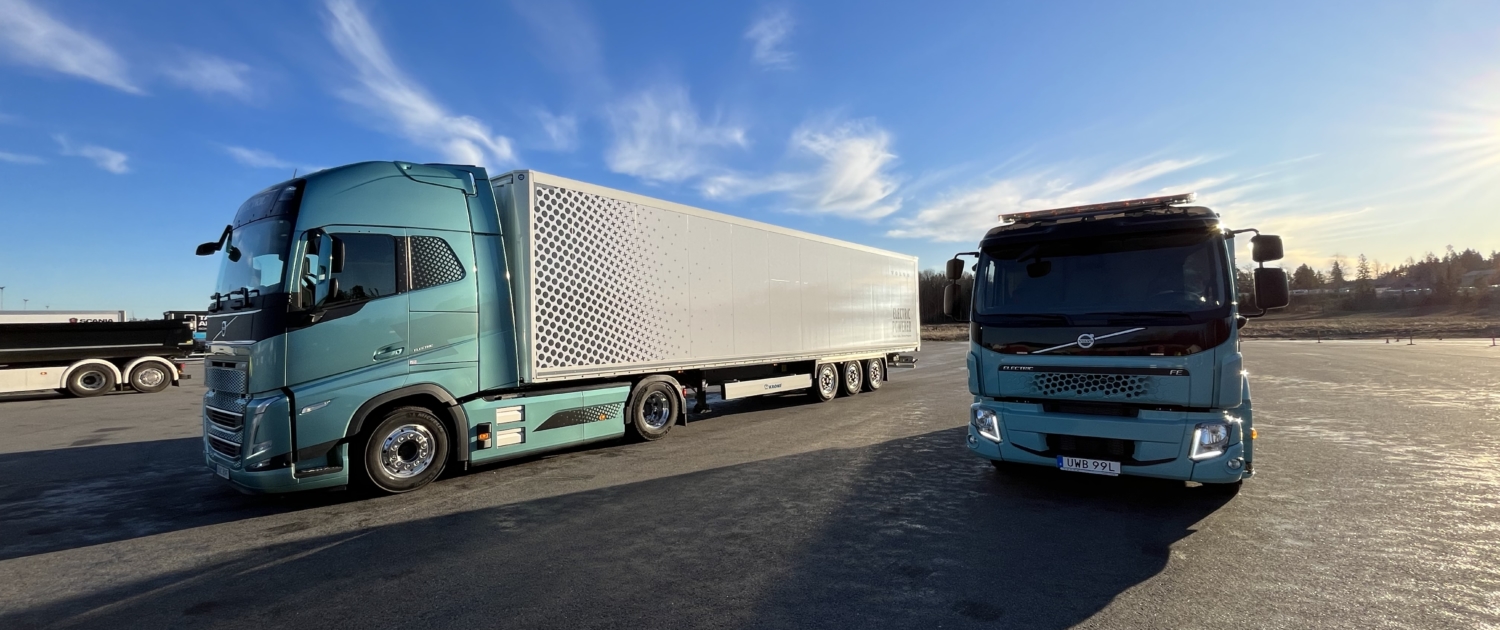Electric delivery trucks and trucks: It's faster than many think
Until now, electrically powered freight vehicles have enjoyed a rather niche existence. They have been overshadowed by electric passenger cars, whose new registrations have developed very dynamically in recent years. Last year, more than one in four new passenger cars in Switzerland could be charged externally, and just under one in five was a purely battery-electric vehicle. However, electrically powered vans and trucks are catching up and are becoming more and more popular.
*****
In mid-January 2023, Swiss logistics company Krummen Kerzers transported 20 tons of oranges from Spain over 3,000 km to Switzerland in an e-truck. That was a record. Two Renault trucks also took part in the eNordkapp Challenge for the first time and reached the destination under difficult weather conditions and arctic cold. E-trucks are also manufactured in Switzerland for various applications - by the Winterthur-based company Designwerk They are used, for example, as road sweepers but also long-distance trucks.
In terms of new delivery trucks (LNF), just under one in ten new vehicles was already purely electrically powered in 2022. At 9.5%, the share is already slightly higher than the share of electric passenger cars in 2020 (8.2%). This is also more than twice as many e-vans as in 2021 (4.5%). The development of delivery vans lags behind the development of passenger cars by just under two years. Although the diesel engine still dominates in this vehicle category, the e-drive has already overtaken the gasoline engine in terms of new registrations.
Source: IVZ ASTRA, as of 6.1.2023
More and more parcel service providers, such as Swiss Post or DPD, are using electric delivery trucks; Quickpac operates its entire fleet of 275 delivery trucks purely electrically. Especially in delivery traffic with a lot of stop&go and plannable daily mileage, e-delivery vehicles are cheaper per km today than vehicles with gasoline or diesel engines, despite higher purchase prices.
And what about heavy-duty trucks (SNF)? As of October 2022, there were just under 54,000 heavy goods vehicles ("trucks and semi-trucks") on Swiss roads, 99% of which were diesel-powered, 0.5% were running on natural or liquefied natural gas, 0.4% had battery-electric propulsion, and 0.1% were fuel cell vehicles.
Source: Swiss Federal Statistical Office, as of 15.10.2022: https://www.bfs.admin.ch/bfs/de/home/statistiken/mobilitaet-verkehr/verkehrsinfrastruktur-fahrzeuge/fahrzeuge/strassenfahrzeuge-bestand-motorisierungsgrad.html
However, a look at new registrations of heavy-duty trucks in 2022 is revealing: in 2022 as a whole, a total of 175 new e-trucks were already registered, which corresponds to a market share of 4.7% among new trucks. This significantly outpaced other alternative powertrains such as natural gas/liquid natural gas (34 new trucks) and fuel cell trucks with hydrogen (3 new trucks). The conditions for zero-emission trucks are ideal in Switzerland: the performance-based heavy vehicle fee ( LSVA) currently does not apply to them. This provides operators with cost advantages over the entire service life of the vehicle
And this development continues. Scania, for example, aims to increase the share of electric trucks in its sales to 50% by 2030. Volvo aims to increase its share of electric trucks to 35% by 2030 and is also working on hydrogen propulsion with fuel cells in a joint venture with Daimler Trucks for long distances and heavy loads. the first vehicles are due to come onto the market in 2025.
Unlike passenger cars, the acquisition of freight vehicles is driven less by emotion and more by economics. Various studies, for example by Agora Verkehrswende, the International Transport Forum ITF, and Strategy&/PWC, show that the total cost of ownership (TCO) of e-trucks for many applications will be lower than that of diesel trucks in just a few years.
 BFE - Christoph Schreyer
BFE - Christoph Schreyer
 ShutterstockKOMO sucht innovative Projekte für eine nachhaltige Freizeitmobilität
ShutterstockKOMO sucht innovative Projekte für eine nachhaltige Freizeitmobilität  BFEErlenmatt Ost: nachhaltig, energieeffizient, sozial.
BFEErlenmatt Ost: nachhaltig, energieeffizient, sozial.  ShutterstockEnergiezukunft als Tagesgeschäft
ShutterstockEnergiezukunft als Tagesgeschäft  ShutterstockNeues Buch erschienen: Wie wird die Digitalisierung die Energieversorgung verändern?
ShutterstockNeues Buch erschienen: Wie wird die Digitalisierung die Energieversorgung verändern? 
 keystone-sda
keystone-sda eicher+pauli
eicher+pauli
Neuste Kommentare